Crews Respond to ‘Bomb Cyclone’ Damage Across State
 By Irwin Rapoport CEG
By Irwin Rapoport CEG


The heavy rains and strong winds that struck California in January, dubbed “bomb cyclones,” caused severe devastation in many parts of the state, taking lives and destroying and damaging homes and businesses. The storm also directly impacted the California Department of Transportation’s (Caltrans)
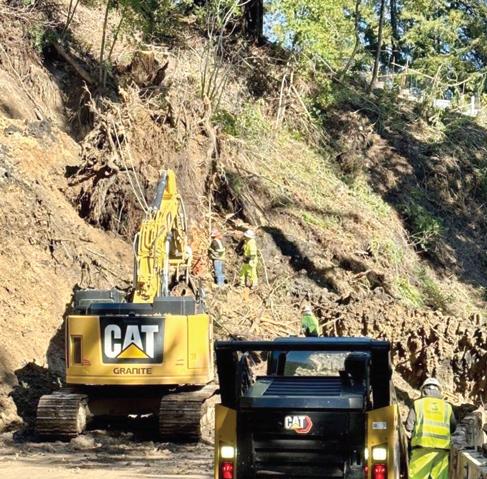



4751 Power Inn Rd., Sacramento, CA 95826 Saturday, April 8th, 2023 @ 8:30am 17129 Highway 99E NE, Woodburn, OR 97071 Friday, April 28th, 2023 @ 8:30am WOODBURN ONLINE EQUIPMENT AUCTION SACRAMENTO ONLINE EQUIPMENT AUCTION www.BARNONEAUCTION.com 866 - 372 - 1700
CORRESPONDENT
CALIFORNIA STATE EDITION A Supplement to: Your California Connection – Sharon Swanson – 1-760-518-4336 – sswanson@cegltd.com March 12 2023 Vol. IV • No. 6 “The Nation’s Best Read Construction Newspaper… Founded in 1957.”
Caltrans photo
In Santa Barbara and San Luis Obispo counties, crews helped clear roadways, creeks and storm basins of debris. Near Fresno County, crews were dispatched to CA-198 near Coalinga to clear mud and rockslides and repair failed slopes, guard railings and portions of the roadway.
Granite photo
Granite Construction was tapped to help repair approximately $300 million in damage caused by massive storms, also knows as a “bomb cyclone,” that ravaged California.
see EMERGENCY page 8

Page 2 • March 12, 2023 • www.constructionequipmentguide.com • California State Supplement • Construction Equipment Guide




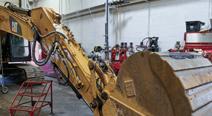

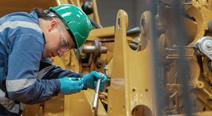











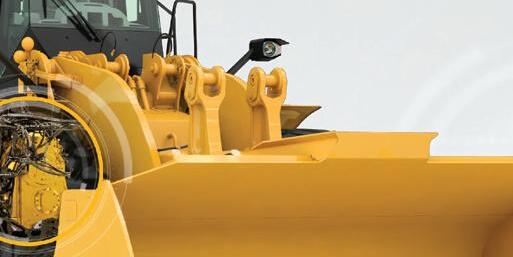










REBUILD REBUILD REBUILD REBUILD REBUILD REBUILD N I A R R T E W O E N I H AC M P T EN N O MP O C I L U A DR Y H C We are so confident in Contact your Californ E N GI N E n the quality of our Certified Rebuild ia Cat Dealer for more informatio n s, when you receive your machine b LIKE NEW W ack, it comes with a WA A OM T S U C ARRANTYY. . , CA CAT © 2023 Caterpillar ATT, ATTERPILLAR, LET’S DO THE WORK, their respective logos, “Caterpillar Corporate Yellow”, the “Power Edge” and Cat “Modern Hex” trade dress as well as corporate and product identity used herein, are trademarks of Caterpillar and may not be used without permission. www.cat.com / www.caterpillar.com SINCE 1936 Oregon, and Southwest W petersoncat.com Bay Area & Northern California, Waashington 844-349-4353 SINCE 1956 hawthornecat.com San Diego 800-437-4228 SINCE 1931 holtca.com Central Northern California 888-294-9778 Construction Equipment Guide • California State Supplement • www.constructionequipmentguide.com • March 12, 2023 • Page 3
State Eyes Pipeline Construction for Capturing Carbon
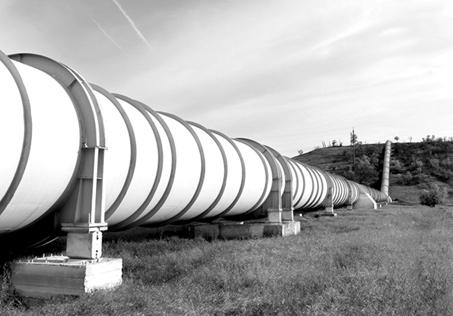
SACRAMENTO, Calif. (AP) In its latest ambitious roadmap to tackle climate change, California relies on capturing carbon out of the air and storing it deep underground on a scale that’s not yet been seen in the United States.
The plan — advanced by Democratic Gov. Gavin Newsom’s administration — comes just as the Biden administration has boosted incentives for carbon capture projects in an effort to spur more development nationwide. Ratcheting up 20 years of climate efforts, Newsom last year signed a law requiring California to remove as much carbon from the air as it emits by 2045 — one of the world’s fastest timelines for achieving so-called carbon neutrality. He directed the powerful California Air Resources Board to drastically reduce the use of fossil fuels and build massive amounts of carbon dioxide capture and storage.
To achieve its climate goals, California must rapidly transform an economy that’s larger than most nations, but fierce opposition to carbon capture from environmental groups and concerns about how to safely transport the gas may delay progress — practical and political obstacles the Democratic-led Legislature must now navigate.
Last year, the California state legislature passed a law that says no carbon dioxide may flow through new pipelines until the federal government finishes writing stronger safety regulations, a process that could take years. As a potential backup, the law directed the California Natural Resources Agency to write its own pipeline standards for lawmakers to consider, a report now that is weeks overdue.
While there are other ways to transport carbon dioxide gas besides pipelines, such as trucks or ships, pipelines are considered key to making carbon capture happen at the level California envisions. Newsom said the state must capture 100 million metric tons of carbon each year by 2045 — about a quarter of what the state now emits annually.
“We do not expect to see [carbon capture and storage] happen at a large scale unless we are able to address that pipeline issue,” said Rajinder Sahota, deputy executive officer for climate change and research of the air board.
State Sen. Anna Caballero, who authored the carbon capture legislation, said the state’s goal will be to create a safety framework that's even more robust than what the federal government will develop. But she downplayed any urgent need to move forward with pipeline rules, saying smaller projects
that don’t require movement over long distances can start in the meantime.
“We don’t need pipelines across different properties right now,” she said.
Last year’s Inflation Reduction Act increases federal funding for carbon capture, boosting payouts from $50 to $85 per ton for capturing carbon dioxide from industrial plants and storing it underground. There are also federal grants and state incentives.
Without clarity on the state’s pipeline plans, the state is putting itself at a “competitive disadvantage” when it comes to attracting projects, said Sam Brown, a former attorney of the Environmental Protection Agency and partner at law firm Hunton Andrews Kurth.
If the pipeline moratorium slows projects for three or four years, Brown said, “why would you put your money into those projects in California when you can do it in Texas or Louisiana or somewhere else?'”
The geology for storing carbon dioxide gas is rare, but California has it in parts of the Central Valley, a vast expanse of agricultural land running down the center of the state.
Oil and gas company California
Resources Corp. is developing a project there to create hydrogen. It plans to capture carbon from that hydrogen facility and the natural gas plant that powers it. The carbon dioxide would then be stored in an old oil field. That doesn’t require special pipeline approval because it's all happening within the company's property.
But the company also wants to store emissions from other industries like manufacturing and transportation. Transporting that would rely on pipelines that can't be built yet.
“These are parts of the economy that have to be decarbonized,” said Chris Gould, the company’s executive vice president and chief sustainability officer. “It makes economic sense to do it.”
Safety concerns increased in 2020 after a pipeline in Mississippi ruptured in a landslide, releasing a heavier-than-air plume of carbon dioxide that displaced oxygen near the ground. Forty-five people were treated at a hospital and several lost consciousness. There are thousands of miles of carbon dioxide pipelines operating across the country and industry proponents call the event an anomaly. But the Mississippi rupture prompted federal regulators to explore tightening the existing rules for carbon pipelines.
Lupe Martinez, who lives in California’s Kern County, worries what will happen as developers target the region for carbon storage.
He used to spray fields with pesticides without protective equipment. On windy
days, he’d be soaked in chemicals. Martinez, who watched some of his fellow workers later fight cancer, said he was lied to about safety then and doesn’t believe promises that carbon capture is safe now.
“They treat us like guinea pigs,” said Martinez, a longtime labor activist.
The oil and gas industry’s emissions are a main cause of climate change and in the past the industry undermined sound evidence that greenhouse gases are deeply disturbing the climate. Now carbon capture — unproven as a major climate solution — will help the industry keep polluting in places that are already heavily polluted, environmentalists argue. Instead of shutting down fossil fuel plants, carbon capture will increase their profits and extend their life, said Catherine Garoupa, executive director of the Central Valley Air Quality Coalition.
But advocates of carbon capture say it’s essential for Kern County oil and gas companies to find new ways to make money and keep people employed as California moves away from fossil fuels, an industry that is the “very fabric” of the region’s identity, said Lorelei Oviatt, director of Kern County Planning and Natural Resources.
Without a new revenue source like carbon capture, “Kern County will be the next Gary, Indiana,” she said, referring to the rust belt’s years-ago collapse.

There are currently no active carbon capture projects in California. To demonstrate the technology is viable and people can get permits for it, it’s essential to build the first projects, said George Peridas, director of carbon management partnerships of Lawrence Livermore National Laboratories.
Peridas said one area with potential to store carbon dioxide is the Sacramento-San Joaquin River Delta, a vast estuary on the western edge of the Central Valley that’s a vital source of drinking water and an ecologically sensitive home to hundreds of species. A levee-ringed island of farmland in the region that's nearly half the size of Manhattan would be an ideal place for storing carbon dioxide safely, Peridas said.
Tom Zuckerman, who represents the islands’ owners on the project and is an owner himself, recently submitted a federal permit application for a project to capture emissions from an ethanol plant in Stockton, ship it by barge nearly 10 mi. down the San Joaquin River and sequester it deep beneath the island. The project doesn’t need a pipeline so it isn't affected by the ban. He hopes it will be up and running in a few years.
“If we are going to be doing much of significance about reducing greenhouse gases in this country, areas like this are going to be critical,” Zuckerman said.
(All photos courtesy of Caltrans.)
Page 4 • March 12, 2023 • www.constructionequipmentguide.com • California State Supplement • Construction Equipment Guide
Gov. Newsom last year signed a law requiring California to remove as much carbon from the air as it emits by 2045 — one of the world's fastest timelines for achieving so-called carbon neutrality.
Last year’s Inflation Reduction Act increases federal funding for carbon capture, boosting payouts from $50 to $85 per ton for capturing carbon dioxide from industrial plants and storing it underground.
NEXT ISSUE CLOSES: MARCH. 29th

Read by over 6,500 contractors monthly! Construction Equipment Guide • California State Supplement • www.constructionequipmentguide.com • March 12, 2023 • Page 5
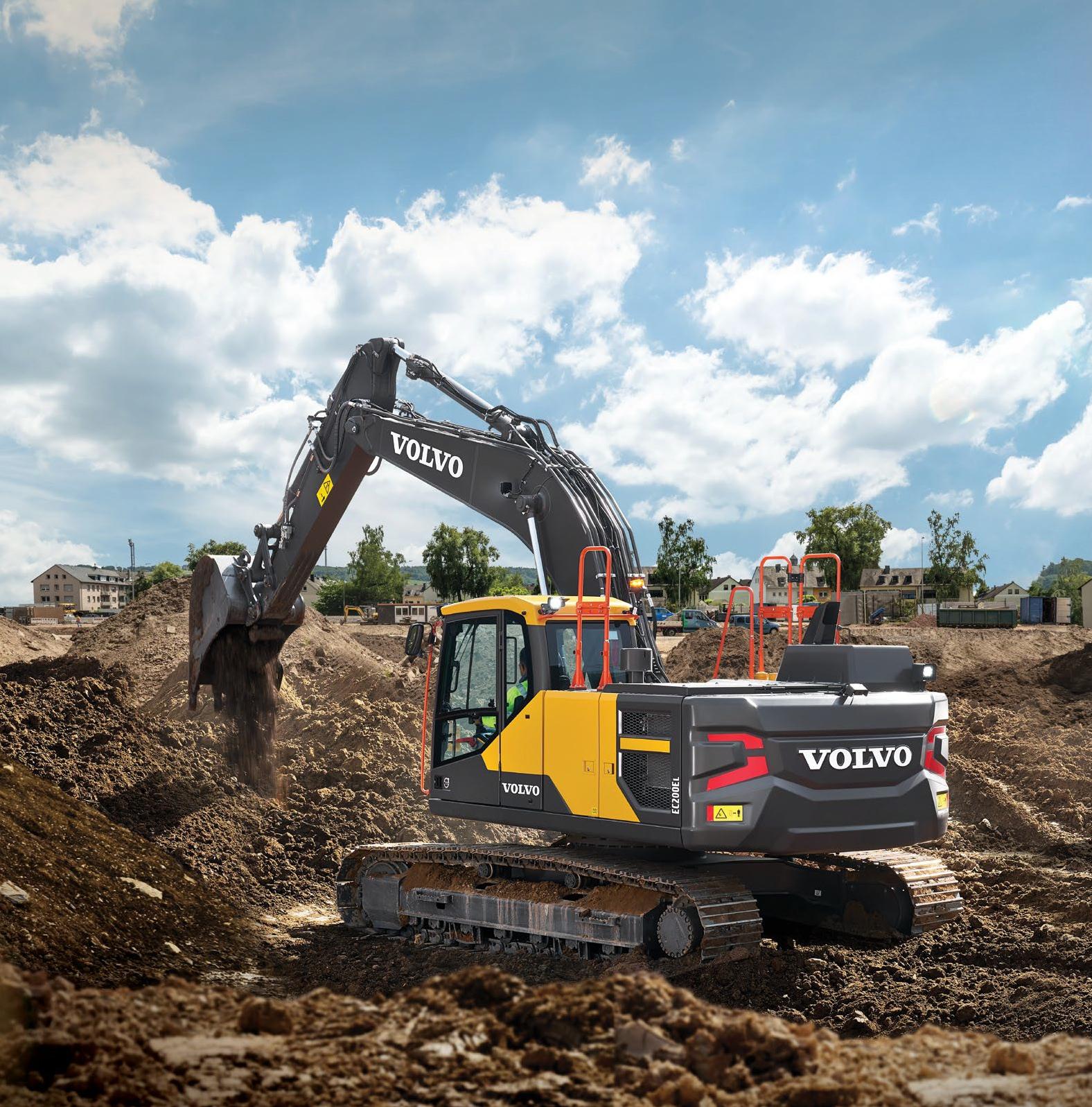

to
maintain
ready to tackle all of your spring jobs with a new Volvo 20-ton EC200E crawler excavator. It’s versatile enough to tackle light- to medium-duty jobs, and it offers strong performance without the added features and costs of a larger excavator. Plus, its size and price point make it a smart addition to any fleet. And if you’re looking for special financing, we’ve got you covered there, too. Let us help put the EC200E to work for you. Contact your nearest VCES location today. GET IT DONE THIS SPRING WITH A VOLVO EC200E EXCAVATOR. Find us on social media: facebook.com/volvoces volvoces VolvoCESvolvoces Bakersfield 9150 Golden State Hwy. Bakersfield, CA 93308 661.387.6090 Corona 22099 Knabe Rd. Corona, CA 92883 951.277.7620 Fresno 4501 E. Volvo Ave. Fresno, CA 93725 559.834.4420 Lakeside 12345 Mapleview St. Lakeside, CA 92040 619.441.3690 Redding 4963 Mountain Lakes Blvd. Redding, CA 96003 279.201.4869 Sacramento 8594 Fruitridge Rd. Sacramento, CA 95826 916.504.2300 San Leandro 1944 Marina Blvd. San Leandro, CA 94577 510.357.9131 Turlock 1275 Venture Ln. Turlock, CA 95380 209.410.6710 vcesvolvo.com Page 6 • March 12, 2023 • www.constructionequipmentguide.com • California State Supplement • Construction Equipment Guide Construction Equipment Guide • California State Supplement • www.constructionequipmentguide.com • March 12, 2023 • Page 7
It’s easy
operate and
— and incredibly fuel efficient. Be
Crews Fix Hundreds of Millions of Dollars Worth of Damage
EMERGENCY from page 1
highway and bridge network and many local roads and bridges.
So much water came down that levees in Monterey County were unable to hold back the water and several collapsed. According to the National Weather Service, areas around the state received between 11 to 47 in. of rainfall and up to 240 in. of snow was received at higher elevations over a one calendar month period.
According to Moody’s RMS, the storms caused between $5 billion to $7 billion in economic damage via the flooding.
Will Arnold, media relations manager of Caltrans HQ, provided an assessment of the situation, stressing that agency was prepared to handle the emergency and whatever Mother Nature could give.
“Caltrans’ maintenance upkeep and designed resiliency measures helped minimize damage costs,” he said. “Compared to the extreme storm event of 2017, which resulted in $1 billion in damages, the total damage costs throughout the state for the January storm events are estimated at approximately $300 million. In this most recent storm, Caltrans incurred about $23 million of damage to the State Highway System [SHS] pavement, most of which consisted of potholes on about 50 lane miles statewide.”
Most of the damage experienced on state highways, noted Arnold, can be classified as washouts due to the extraordinary rainfall and runoff, as well as slides/slipouts due to over saturation of soils.
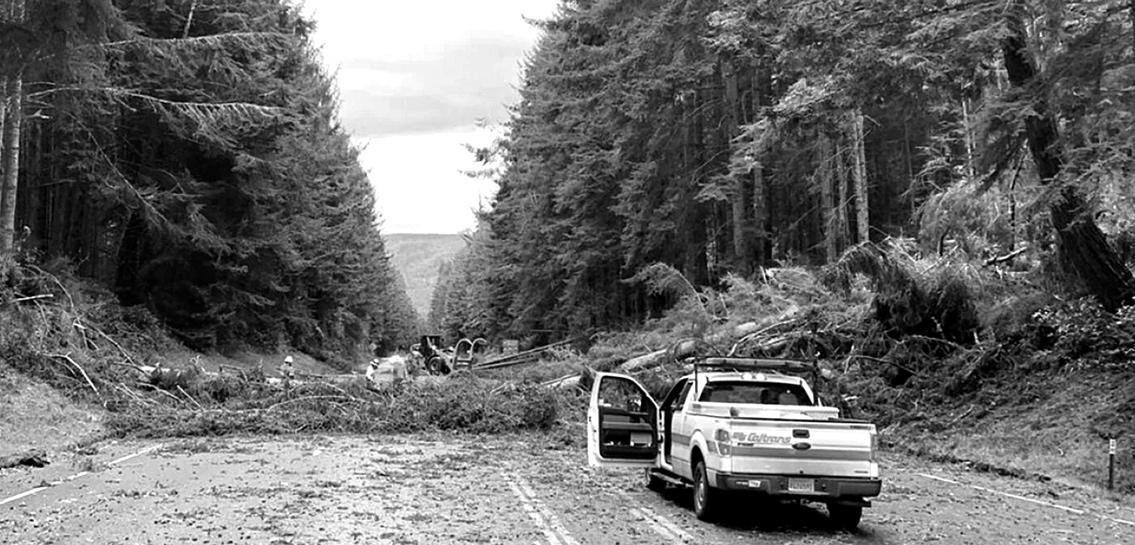
The breakdown of damage is broken down into the following categories:
• Slides/slipouts: 45 percent;
• Culverts: 11 percent;
• Drainage: 10 percent;
• Debris removal: 8 percent;
• Tree removal: 3 percent;
• Other/combinations: 23 percent.
One of the general contractors brought in to conduct emergency work is Granite Construction, which has crews operating in several areas engaged in removing earth and rock from mudslides, removing trees and other debris. The company has done a fair amount of emergency work and leans on its prior experience in previous operations following disasters.
“We had work all over the major roadways in the Santa Cruz mountains,” said Project Manager Tony Torres. “CA-17 southbound had a 400 cubic yard slide we cleared and we’ve cleared a 3,500 cubic yard slide a little south of Ben Lomond on CA-9. Down the hill, we’ve been clearing woody debris from the San Lorenzo River Bridge on CA-1 in Santa Cruz.”
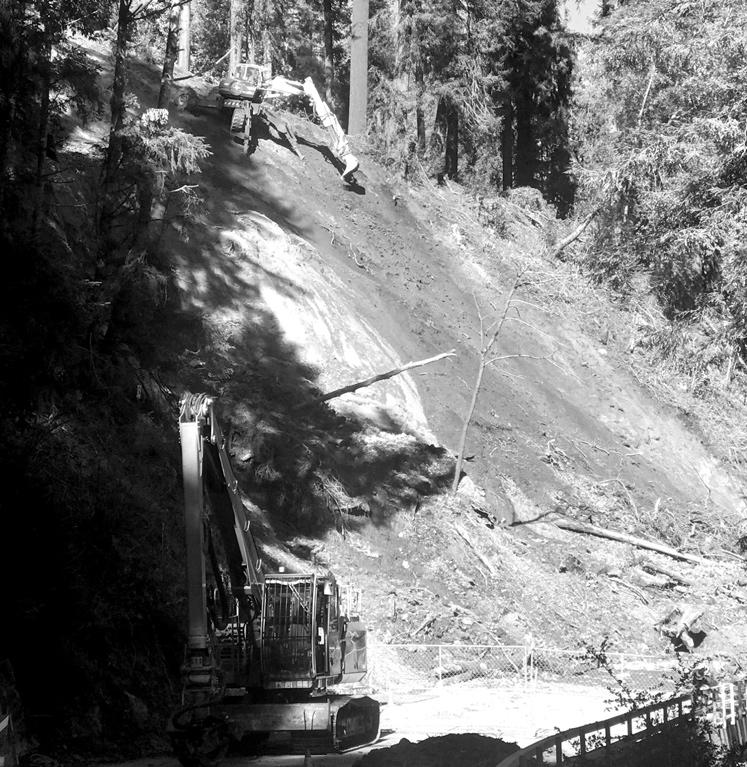
However, the emergency work is not limited to the Santa Cruz area and Granite has
been called on by numerous agencies in the areas hardest hit for emergency response. In the Salinas Valley, Granite crews inspected bridges to assess storm damage; in Carmel Valley, crews cleared a landslide; in Carmelby-the-Sea, Granite crews assessed impacts to a sewer line and potential road subsidence onto the beach. In Santa Barbara and San Luis Obispo counties, crews helped clear roadways, creeks and storm basins of debris. Near Fresno County, crews were dispatched to CA-198 near Coalinga to clear mud and rockslides and repair failed slopes, guard railing and portions of the roadway.
Construction Manager Brian Hussar discussed how important safety is during these operations.
“Working in extreme weather events creates special safety considerations and our teams are skilled at recognizing and mitigating hazards and at communicating those hazards to our clients,” Hussar said. “Mobilized teams follow daily safety protocols like they would at any other job, though the Take-5 might be a lot longer than five minutes in these cases.”
Other emergency work in response to the current storms includes setting K-rail at two failing highway shoulders, placing sandbags and plastic on various slide areas, and clearing numerous small slides and debris.
“Our Monterey Bay branch has six separate clients we have been or will be performing emergency work for,” he said. “In some cases, we had up to eight separate operations going on for various clients. In terms of tim-
see EMERGENCY page 10
Page 8 • March 12, 2023 • www.constructionequipmentguide.com • California State Supplement • Construction Equipment Guide
Granite photo
According to the contractor, emergency challenges included avoiding active slides, down power lines, lighting, slips, poor access on roads, limited access, falling trees, backing equipment, unsteady loads, uneven surfaces and fatigue.
Granite photo
Granite cleared a 400-cu.-yd. slide on CA-17 southbound; cleared a 3,500-cu.-yd. slide south of Ben Lomond on CA-9; and has been clearing woody debris from the San Lorenzo River Bridge on CA-1 in Santa Cruz.
New Construction Coming... Caltrans, Brightview West Planning Bridge Over Rail
The California Department of Transportation (Caltrans), the California Department of Fish and Wildlife (CDFW) and Brightline West have entered into an agreement to design and construct three wildlife overcrossings across Interstate 15 (I15) and the future Brightline West highspeed rail system connecting Las Vegas and Southern California. These dedicated overcrossings will provide a sustainable and safe path for wildlife — especially for bighorn sheep — over the existing northbound and southbound highway lanes and the future high-speed rail system to be built within the median.
“Roadways and rail lines must be designed to connect, not divide,” said Gov. Gavin Newsom. “This project will not only protect the precious wildlife and habitat of the Mojave Desert region but will also get people between Las Vegas and Southern California safely and efficiently – preserving one of the most popular corridors in our state.”
CDFW has identified three priority locations for the wildlife overcrossing — all in San Bernardino County. These overcrossings will be built near Zzyzx Road, near
Mountain Pass and near Rasor Road, spanning the entire width of I-15 including the Brightline West rail line. Beyond the three wildlife overcrossings, the Brightline West project will maintain or improve more than 600 culverts and large-scale crossings under I-15 that exist today. The project also will restore and install desert tortoise fencing and directional wildlife exclusionary fencing.
Over the past year, Brightline, Caltrans and CDFW have worked together to develop a coordinated plan to fund, design, construct and maintain these wildlife overcrossings. The parties intend to fund the overcrossings using a mix of Caltrans, CDFW and Brightline West capital resources, while also seeking federal dollars.
Giving wildlife freedom to roam despite the growing infrastructure needed to support California’s robust human population is a top priority for CDFW. San Bernardino County, where these overcrossings will be constructed, is a particularly high-need area.
“When launched, Brightline West will be one of the greenest forms of transportation in America and an eco-friendly upgrade to the I-15,” said Sarah Watterson, Brightline West president. “Beyond significantly cutting car-
bon emissions and creating a cleaner, more efficient way to travel, this is just one more way the introduction of this system will ensure vital and long-term protections for a diverse array of wildlife.”
Brightline West is developing a 218-mi. high-speed rail system designed to connect Las Vegas and Southern California with a fully electric, emission-free system that will include stations in Rancho Cucamonga, Hesperia, Apple Valley and Las Vegas. It will bring significant environmental and economic benefits, including the projected elimination of 3 million cars annually, the reduction of more than 400,000 tons of carbon emissions each year and the creation of an estimated 35,000 jobs.
About Caltrans
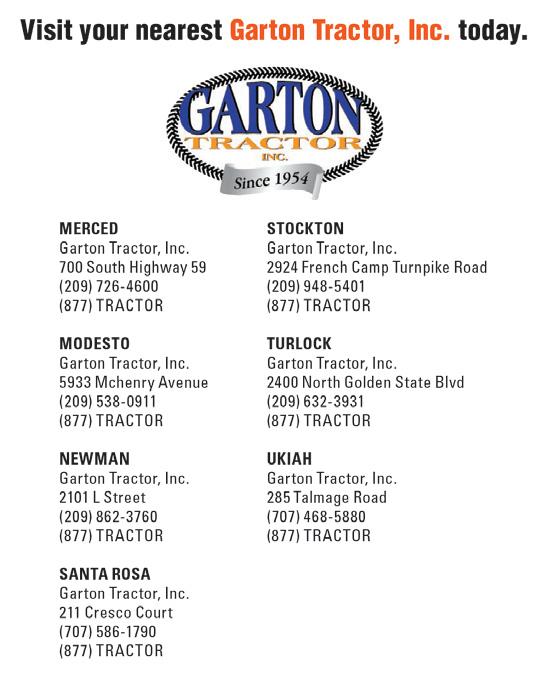

Caltrans manages more than 50,000 mi. of California’s highway and freeway lanes, provides inter-city rail services, permits more than 400 public-use airports and special-use hospital heliports, and works with local agencies. Caltrans carries out its mission to provide a safe and reliable transportation network that serves all people and respects the environment.
About CDFW

The mission of the California Department of Fish and Wildlife is to manage the state’s diverse fish, wildlife and plant resources, and the habitats on which they depend, for their ecological values and for their use and enjoyment by the public.
About Brightline
Brightline is the only private provider of modern, eco-friendly, intercity passenger rail service in America. The company currently serves Miami, Aventura, Fort Lauderdale, Boca Raton, and West Palm Beach in Florida, with its Orlando station beginning service in 2023. Recognized by Fast Company as one of the Most Innovative Companies in travel, Brightline offers a guest-first experience designed to reinvent train travel and take cars off the road by connecting city pairs and congested corridors that are too close to fly and too long to drive. Brightline West will build on this awardwinning service by connecting Las Vegas and Southern California, with stations in Las Vegas, Victor Valley, Hesperia, and Rancho Cucamonga, and connectivity to Metrolink’s regional rail network.
Construction Equipment Guide • California State Supplement • www.constructionequipmentguide.com • March 12, 2023 • Page 9
Granite Works Through Multiple Counties to Correct Slides
ing, this year we have responded in as little as 24 hours in certain cases. More typically, we can respond with crews on the ground in three-to-five days. We ask our clients how soon they need us to respond. Usually, when they call us, they are still assessing their situation and coming up with a plan. Emergency work has required all of our signatory trades, laborers, operators, masons, carpenters and teamsters.”
Equipment In Use
Typical emergency work, said Fogg, uses excavators (Cat 315, 335, 325 and 336 models), front end loaders (Cat 950 and 966 models), skip loaders, backhoes (John Deere 410 and 710 models), and forklifts (Cat 1255 and 1055 models). Some specialty work was performed by tree subcontractors and limited access contractors, who used Menzi Muck (“spider”) excavators.
Crews are mainly engaged in day operations.
“Critical work dealing with arterial roadways was performed 24/7,” said Fogg
Asked what are some of the particular dangers that crews have to deal with, Fogg replied, “Active slides, down power lines, lighting, slips, poor access on roads, limited access, falling trees, backing equipment, unsteady loads, uneven surfaces and fatigue.”

Previous emergency work operations have honed the skills of the crews and Granite managers.
“We are able to respond in the way that we do because crews are getting better at it,” said Fogg. “Field crews take the initiative to actively plan work and keep our clients happy, while communicating to project management. The efforts of the crews are monumental and top tier.”
The amounts of earth and rock being removed continues to grow.
“The scale of removal is in the tens of thousands of cubic yards range,” said Fogg. “Typically, the material is going to dump sites owned by the respective client. Some material is taken to temporary stockpiles. Disposal locations include shoulders, ramp islands, landfills and private ranches. Some trees are cut and left to a local private owner to use as lumber if they choose. Most wood debris is mulched and spread in respective stockpile yards. Wood waste, due to chemical treatment, typically goes to a landfill.”
In terms of road and bridge work, Fogg added, “Mostly roads being re-built. Typical operation is to ensure the water source that caused the damage has ceased or has been diverted. We excavate out damage and reach competent material. We backfill with select fill, then install some level of slope protection [jute netting, gabion stone, or riprap]. As
needed, we replace drain culverts, then pave road back. Sometimes we add curbing that will help channel water in the future. A good portion of the work is reimbursed by FEMA — their requirement limits work to replace in kind.”
Fogg noted that relations with Caltrans and other authorities is good.
“They are able to call on us and we are able to respond,” he said. “We also are able to collaborate on means/methods or repair plans.”
Granite also provided an update via a statement.
“As most of you know, California started 2023 with disaster,” Granite said in a state-
The breakdown of damage is broken down into categories. Slides/slipouts accounted for 45 percent of damage; culverts, 11 percent; drainage, 10 percent; debris removal, 8 percent; tree removal, 3 percent; and other/combinations, 23 percent.

ment. “Historic rains, winds and waves, driven by a powerful series of atmospheric rivers, battered homes and infrastructure. Throughout California’s central coast, the transportation network faced a series of emergencies related to flooding, landslides and falling trees. The coastal ranges of northern California were heavily impacted by the extreme weather, threatening to cut residents off from essential services; in areas of southern California extreme flooding turned roads to rivers, with some residents taking to kayaks to escape; and across the entire state the intense storms caused major damage to infrastructure. In response to the disaster, Granite has been tapped to perform varied emergency work in the aftermath of the epic New Year’s storms.”
Most of the damages manifested as slides and culvert/drainage failure on roads, causing road and lane closures, according to Arnold.
“Statewide, Alameda County had the most damage sites reported [approximately 8 percent of total sites] and Los Angeles County has the most monetary damage [approximately 13 percent of the total damage cost]. The hardest hit areas for Caltrans infrastructure were the Southern [23 percent of total cost reported] and Mid [50 percent of total cost reported] highway portions of the state.”
Caltrans was on top of the situation the moment the rains began.
“Emergency repair contracts were initiated immediately as soon as we could safely access the damage sites, often during the storm itself,” said Arnold. “Some damages are still being assessed. One area, State Route 1 along Big Sur in Monterey and San Luis Obispo counties, is being broken up into segments to speed up the reopening to traffic.
“Prior to every rainy season, Caltrans conducts statewide training and exercises to be ready to respond and recover from damaging storm events,” he added. “Caltrans will preposition staff and resources as needed in advance of a forecasted severe storm. The department has specialized damage assessment teams throughout the state ready to respond. During the storms, damage assessment begins once teams can safely access the sites. Caltrans has an emergency contracting processes that allows us to begin repairs within hours.”
Granite has an extensive history of responding to disasters in the Golden State. In recent years, these have included a March 2022 landslide near Lake Tahoe; wildfire response in 2020 and 2021; the 2018 Montecito debris flow; and storm response in 2017. Granite Vice President Brent Fogg is helping to oversee emergency operations.
Page 10 • March 12, 2023 • www.constructionequipmentguide.com • California State Supplement • Construction Equipment Guide
CEG
Granite photo
In the Salinas Valley, Granite crews inspected bridges to assess storm damage; in Carmel Valley crews cleared a landslide; in Carmel-by-the-Sea Granite crews assessed impacts to a sewer line and potential road subsidence onto the beach.
Granite photo
EMERGENCY from page 8
PIRTEK Power Inn
4191 Power Inn Road, Suite D
Sacramento, CA 95826
916-737-7777
PIRTEK San Leandro
1997 Burroughs Ave
San Leandro, CA 94577
510-568-5000
PIRTEK SFO

San Francisco, CA 650-532-9200
State Receives $35M for Five Reconnecting Pilot Projects
California will receive more than $35 million through the first round of funding from the Reconnecting Communities Pilot Program. The program will fund the planning, design, demolition and reconstruction of street grids, parks, or other infrastructure to reconnect communities divided by transportation infrastructure.
Projects receiving funding include:
• $30 million for the city of Long Beach to reconfigure West Shoreline Drive to remove a roadway barrier and improve access and connectivity between Downtown Long Beach and public open space;
• $2 million for the city of Pasadena to support the study of transportation and land use needs related to the future redevelopment of the I-710 “northern stub” that was recently transferred to the city;



• $2 million for the city of San Jose to assess the feasibility and conceptual designs for converting Monterey Road from a highway to a “complete street” safe for all road users;
• $680,000 for Caltrans and the city of Oakland to explore ways to reconnect communities divided by transportation infra-
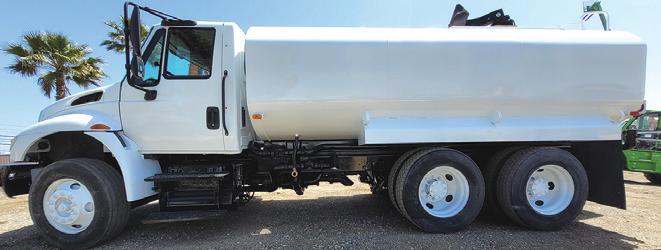
structure along Interstate 980.
• $600,000 for the city of Fresno to support planning activities for a pedestrian bridge that crosses State Route 99 and connects Parkway Drive and Roeding Park, primarily serving the Jane Addams Neighborhood.
“We are excited to see five California projects receive funding as part of the U.S. Department of Transportation’s first Reconnecting Communities Pilot Project grant awards,” said California State Transportation Agency Secretary Toks Omishakin. “Transportation should always improve access to opportunity and be a uniter not a divider. These awards, coupled with the forthcoming $150 million state investment for a parallel Highways to Boulevards pilot program, will allow California neighborhoods divided by transportation infrastructure – particularly communities of color – to take steps to remove literal barriers to opportunity and begin making up for past harms.”
For more information, visit https://www.transportation.gov/grants/recon necting-communities
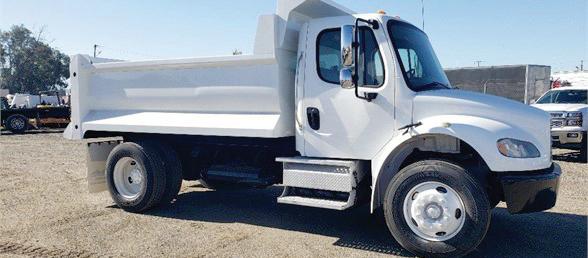
Construction Equipment Guide • California State Supplement • www.constructionequipmentguide.com • March 12, 2023 • Page 11
Please call and reach out for more information. 14635 Valley Blvd. Fontana, CA 92335 909-822-2200 www.scottequip.com Western Rentals Offers Custom Vocational Truck Builds. Water Truck Dump Truck
Tough to beat for performance,







comfort and easy of use.
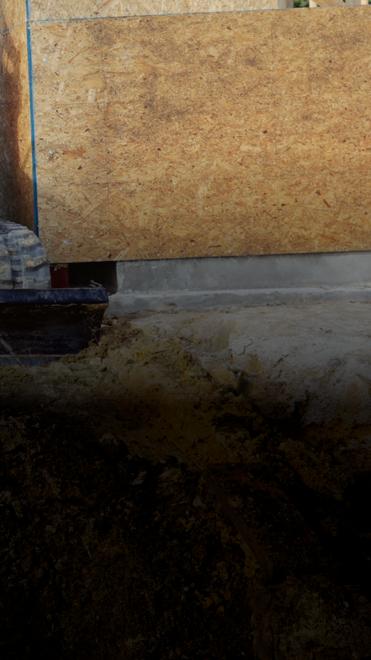
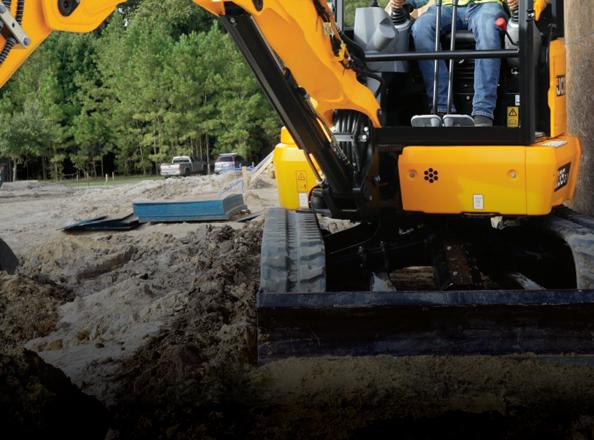
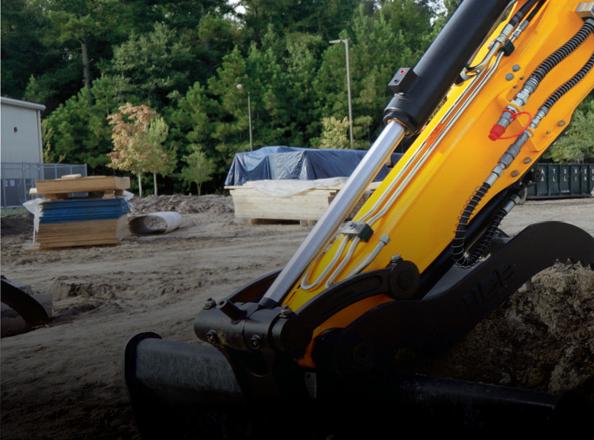
Page 12 • March 12, 2023 • www.constructionequipmentguide.com • California State Supplement • Construction Equipment Guide JCBNA @JCBNA JCBNORTHAMERICA JCBNA www.jcb.com
safety,
out our full line of JCB products at your local dealer or visit JCB.com today. SoCal JCB 14675 Valley Blvd. Fontana, CA 92335 (866) 522-7225 14480 Alondra Blvd. La Mirada, CA 90638 (866) 522-7225 www.socaljcb.com 1960 Highway 20 Colusa, CA 95932 (530) 458-2166 2173 Blossom Street Dos Palos, CA 93620-2313 (209) 392-2161 600 S. State Highway 59 Merced, CA 95341-6928 (209) 383-5888 1340 W. Charter Way Stockton, CA 95206 (209) 944-5500 20280 Main St. Stratford, CA 93266 (559) 947-3301 1215 West Glenwood Ave Turlock, CA 95380-5703 (209) 634-1777 827 North Tehama St Willows, CA 95988 (530) 934-3382 3056 Colusa Highway Yuba City, CA 95993 (530) 923-7675 N&S Tractor www.nstractor.com
Better? It’s something we all strive for. But to be better you must be efficient. Be productive. Be versatile. Be dependable. And you need equipment that supports you every step of the way, no matter how big or small the task. Because good enough is never good enough. Check
 By Irwin Rapoport CEG
By Irwin Rapoport CEG

























































